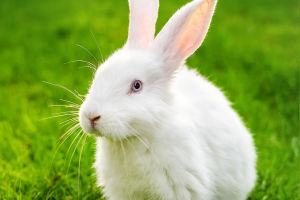The bighorn sheep is a mammal that inhabits the mountainous regions of North America.
They are known for their robust physique and majestic horns, particularly in males, where the horns can grow to impressive sizes, forming a spectacular spiral.
These characteristics not only make the bighorn sheep a vital part of the ecosystem but also a star attraction for wildlife observers and hunting enthusiasts. This article will provide an informative overview of bighorn sheep from multiple perspectives.
1. Biological Characteristics
Bighorn sheep have a robust body, with males typically weighing between 80 to 140 kilograms and females relatively lighter, ranging from 50 to 90 kilograms. Their limbs are short and powerful, making them well-suited for climbing steep mountainous terrains.
Bighorn sheep have dense fur that effectively protects them from cold weather, becoming even thicker in winter. Additionally, their vision and sense of smell are highly acute, allowing them to detect predators early in the wild.
2. Habitat
Bighorn sheep primarily inhabit the high mountainous areas of North America, such as the Rocky Mountains and various ranges in the West. They prefer dry, rocky environments, often found at higher elevations.
During the spring and summer, bighorn sheep migrate to higher mountains, while in winter, they descend to lower slopes in search of food. This seasonal migration allows them to maximize their utilization of vegetation resources at different elevations.
3. Role in the Food Chain
As herbivores, bighorn sheep mainly feed on grasses, shrubs, and other vegetation. Their diet is quite varied, including moss and alfalfa.
In the ecosystem, bighorn sheep not only serve as seed dispersers but also become prey for other animals. Predators like wolves and mountain lions often target bighorn sheep. By maintaining a balanced population, bighorn sheep play an essential role in the ecosystem.
4. Reproductive Behavior
Bighorn sheep are highly social animals, typically living in small groups. Males often engage in competitive behavior during the breeding season to secure mating rights.
The breeding season usually occurs in the fall, with females giving birth to lambs about six months after conception. After birth, the lambs remain closely attached to their mothers until they can live independently.
5. Conservation Status
Although bighorn sheep populations are relatively stable in some areas, their survival faces increasingly severe threats. Habitat destruction, climate change, and hunting are significant factors affecting their survival.
In certain regions, bighorn sheep numbers have declined sharply, prompting conservation organizations to take action to protect their habitats and conduct breeding programs. Additionally, public education is crucial in raising awareness about bighorn sheep conservation, so that everyone can work together to safeguard the future of this species.
6. Cultural Significance
In North American indigenous cultures, bighorn sheep symbolize strength and courage. Their image often appears in art and legends, representing the harmony between nature and humanity.
Bighorn sheep are not only beautiful and strong animals, but they also play an important role in the ecosystem. By understanding bighorn sheep, we can better appreciate the complexity of the natural world and the wonders of life. In the days ahead, may everyone contribute to the protection of bighorn sheep and their habitats, ensuring the continuation of this magnificent species.


